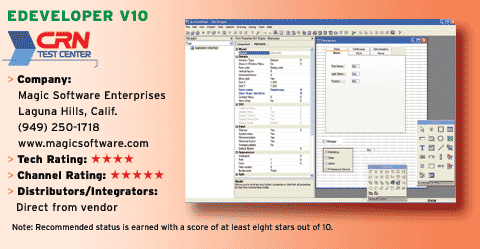Borland&s Synergy Solution
Within its IDE components, such as the code editor, design surfaces and debugger, developers can share views and engage in multisession collaboration in realtime. Also, just as e-mail and instant messaging are useful for any collaboration, JBuilder&s peer-to-peer feature allows developers to know who is online and enables them to share all artifacts inside each IDE.
JBuilder&s new peer-to-peer technology works in a fashion similar to Apple&s iTunes, where it auto-discovers peers on a network. For remote users, once they connect on the local side with a client, that client is then set up as a server, resulting in a seamless connection between a LAN and a WAN.
The level of network transparency allows developers to work from any location in the world. With JBuilder 2006, solution providers working with off-shore teams no longer have to pay for ASP-based development and collaboration services from third-party providers.
JBuilder uses the concept of shared tokens to eliminate contention. Whoever has a token has the ownership to make edits within a project and block anyone else from editing the same code at the same time. When multiple developers are sharing a session and a developer has a token to make changes to a file, the other developers are put into browse mode. In browse mode, everything is viewable in realtime, but there is no interaction and changes can&t be made. Instead, developers can follow along and study code without interfering with other peers. This amounts to significantly greater productivity, especially for training purposes.
JBuilder now includes a new color-coding scheme that works similar to Microsoft Word&s track changes function, which helps developers track different code segments between multiple members of a team. By revisiting a project and looking at code with a specific color, developers can determine when new text was added or deleted, and by whom.
Developers can participate in debug sessions and view breakpoints and values as a program runs in realtime. However, peers cannot see the user interface running or any output because the actual application is running on a host machine.
JBuilder&s peer-to-peer feature also has built-in security such as IP filtering, which provides secured channels so developers know that they are communicating with only the applicable parties. Developers must prove credentials for authentication. Files that are shared are encrypted and cannot be viewed by anyone outside a shared session.
Out of the box, JBuilder integrates with Google Talk and arrives with some productivity enhancements for refactoring code. JBuilder also supports JSF designers, WS-I, Apache Tomcat and Axis, as well as the major J2EE application servers on the market, including JBoss. For XML parsing, the Crimson parser has been replaced by Xerces.
Since JBuilder&s peer-to-peer feature includes auto-discovery capabilities that are built right into the IDE, customers do not have to purchase a separate collaboration server. This technology complements source management products such as SourceSafe and CVS, so change management procedures can remain the same.
Borland&s Web portal for partners offers training, support and a plethora of technical and marketing materials. Borland also offers channel account managers and channel sales representatives. Technical-support programs for integration are available for purchase. JBuilder Enterprise Edition is priced at $3,500. Borland did not disclose margins.
